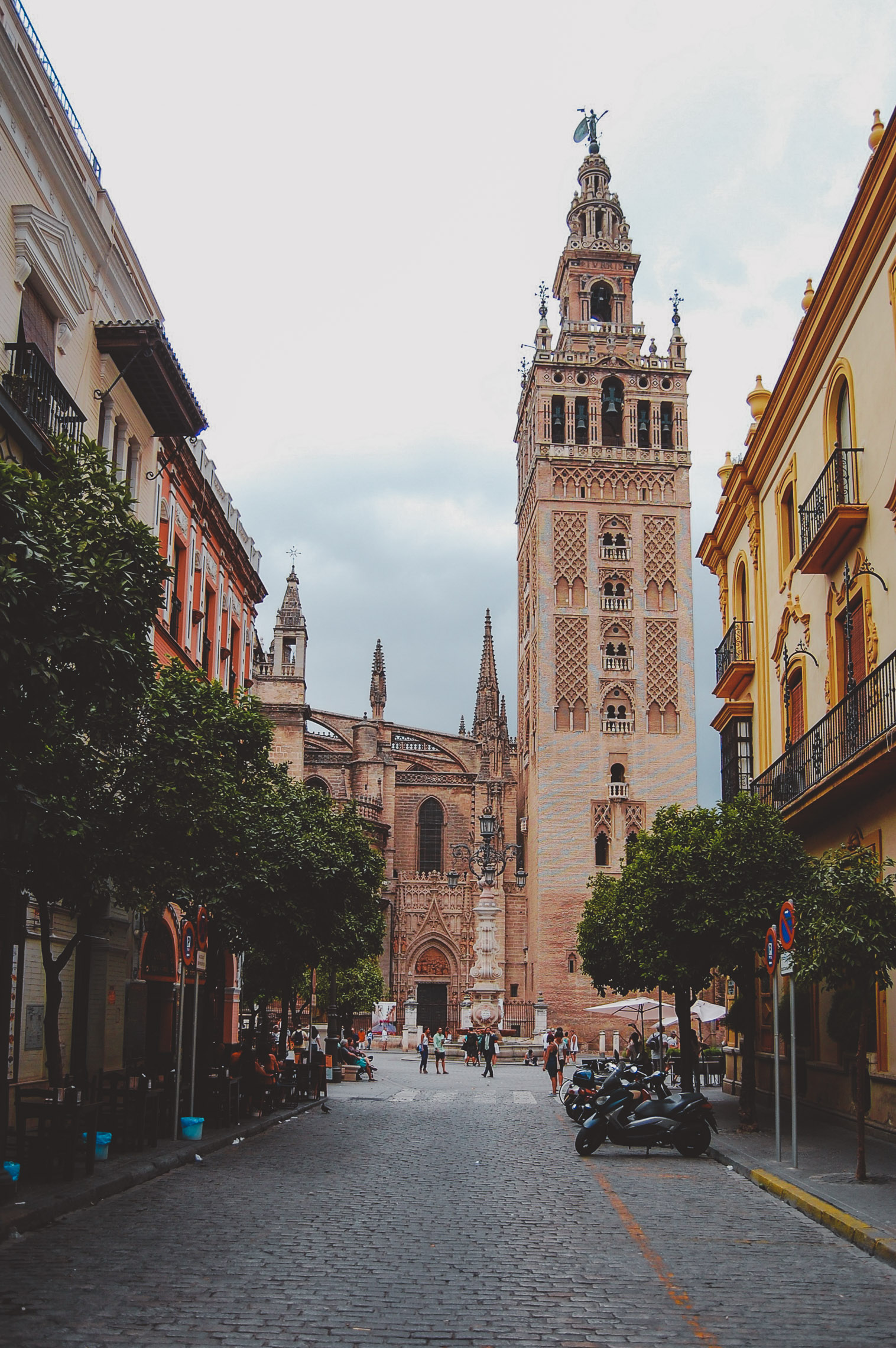
If you ever travel through Spain, you’ll notice there are a few unique things about some of its architecture. While you’ll definitely notice styles similar to other Western European countries, you’ll also start noticing designs that seem reminiscent of something you’d expect to see in the Middle East. Whether its arabesque decor or those unmistakable red and white arches, there’s quite a lot of Islamic architecture in Spain. You won’t see this in most European countries, so how exactly did it get into one of the most infamously Catholic of them all?
Why is there Islamic architecture in Spain?
The short answer
The Moors held control of most of the Iberian Peninsula for over 700 years. Not only did they have control, their empire existed in a golden age. While the rest of Europe was muddling through the Dark Ages, Islamic Spain was flourishing and making incredible advancements in all fields.
The long answer
How the Muslims gained control
In 711, Tariq bin Ziyad invaded the Iberian Peninsula (modern-day Spain and Portugal) from Northern Africa. Depending on who you ask, this was either because a Christian chief asked for help against the Visigoth ruler, Roderic, or because the peninsula was simply next on the list for territory expansion. Within less than a decade, they ruled most of the region, except for Asturias up north.
The area was then known as al-Andalus. There were a number of different ruling periods but the capital was always in the present day region we know today as Andalusia. The Moors had control of the peninsula for over 700 years, all while fighting and then slowly losing territory to the Spanish.
Spain’s golden age
This period is known as a golden age for Spain. While the rest of the continent was living through the Dark Ages, al-Andalus was flourishing. In those seven centuries, they saw advancements in science, relative religious tolerance (at least compared to the Spanish Inquisition that would follow), and overall prosperity. They created incredible architecture, cultivated a rich culture, and became the leaders in education.
Lasting influence
With over 700 years of such a strong foundation, not even the Spanish Inquisition, centuries of Catholic Spanish kings, and Franco’s fascist dictatorship could wipe out Islam’s influence. We see it in the names of Spanish cities (‘Madrid has Arabic origins) and hear it in certain Spanish words (‘hasta’ comes from the Arabic ‘hata’). The best way that this rich culture has survived, though, is in its remaining architecture.
Even as Spanish rulers embarked on the Reconquista and Isabel and Ferdinand expelled or murdered many of the Moors, Jews, and other non-straight Catholic citizens, they more or less kept much of the buildings and architecture created. Today, many are working to maintain, restore, and excavate more remnants of Islamic Spain.
5 Islamic structures to visit in Spain:
One of the things you absolutely do not want to miss if you visit Spain is visiting at least one of these structures.
1. The Mosque-Cathedral of Córdoba
The Mosque-Cathedral of Córdoba is one of the best examples of Spain’s Arabic-European history. Legend has it that the site of the Mosque-Cathedral was once home to a Christian church under the Visigoths. Then it was bought in 784 by Abd al-Rahman I who turned it into a mosque, and then, during the Reconquista in 1236, it was turned back into a Catholic Church which is what it is today. Its most noticeable feature is its various arches and columns that you can walk under.

2. The Alhambra in Granada
You can’t talk about Islamic Spain and not talk about the Alhambra. If you visit Granada, you can easily see it from afar up atop its hill. It started out as a small fortress in the 800s and was redesigned into the palace you see today when the massive al-Andalus empire was reduced to the Nasrid Emirate of Granada during the 1200s and 1300s. You could say it was more or less the last stronghold of Islamic Spain before the Spanish reconquered the country.

3. Seville’s Giralda
One of the most iconic symbols of Seville, the Giralda, was, for the longest time, the tallest building in the whole world. Built in 1195, it served as the minaret for the Aljama mosque and was turned into a bell tower after an earthquake destroyed the top. What you see now is a mix of both Moorish and Renaissance architecture.

4. Medina Azahara near Córdoba
On your trip to Córdoba, make sure to make time to visit the Medina Azahara, outside of the city. While we only have an excavation site today, Azahara was once the capital of the Caliphate of Córdoba. Abd-ar-Rahman III al-Nasir had it built to symbolize his power as the new caliph. Think of it as the Versailles of its time.

5. Mosque of Cristo de la Luz in Toledo
If you’re not planning to visit Andalusia, Toledo is the best city to see a bit of Islamic history. It’s less than an hour from Madrid and is full of stunning landmarks. The best example is the Mosque of Cristo de la Luz. Of the ten mosques that once stood in in the city, Cristo de la Luz has lasted the best. While it was first constructed Ahmad ibn Hadidi in 999, you’ll notice the name isn’t exactly Muslim. Translated to ‘the light of Christ’, its name comes after the Spanish reconquered Toledo.

Looking for more on Spanish travel? Read these next:
- A Beginner’s Guide to Andalusia: 10 Things to Know Before You Go
- Seville or Madrid: Which City Should You Visit?
- 9 Underrated Things to Do in Madrid
Like this post? Pin it for later!

Have you visited any of these structures or have you seen other examples of Islamic architecture in Spain?




Dear Samantha: don’t forget “La Aljafería” in Zaragoza, the most beautiful palace built in the XI century by al-Muqtadir, a powerful ruler of muluk al tawaif. On the other hand, in Cáceres, Badajoz, Mérida, Trujillo, Gormaz… you can find the best examples of military architecture. Sorry for my bad english.